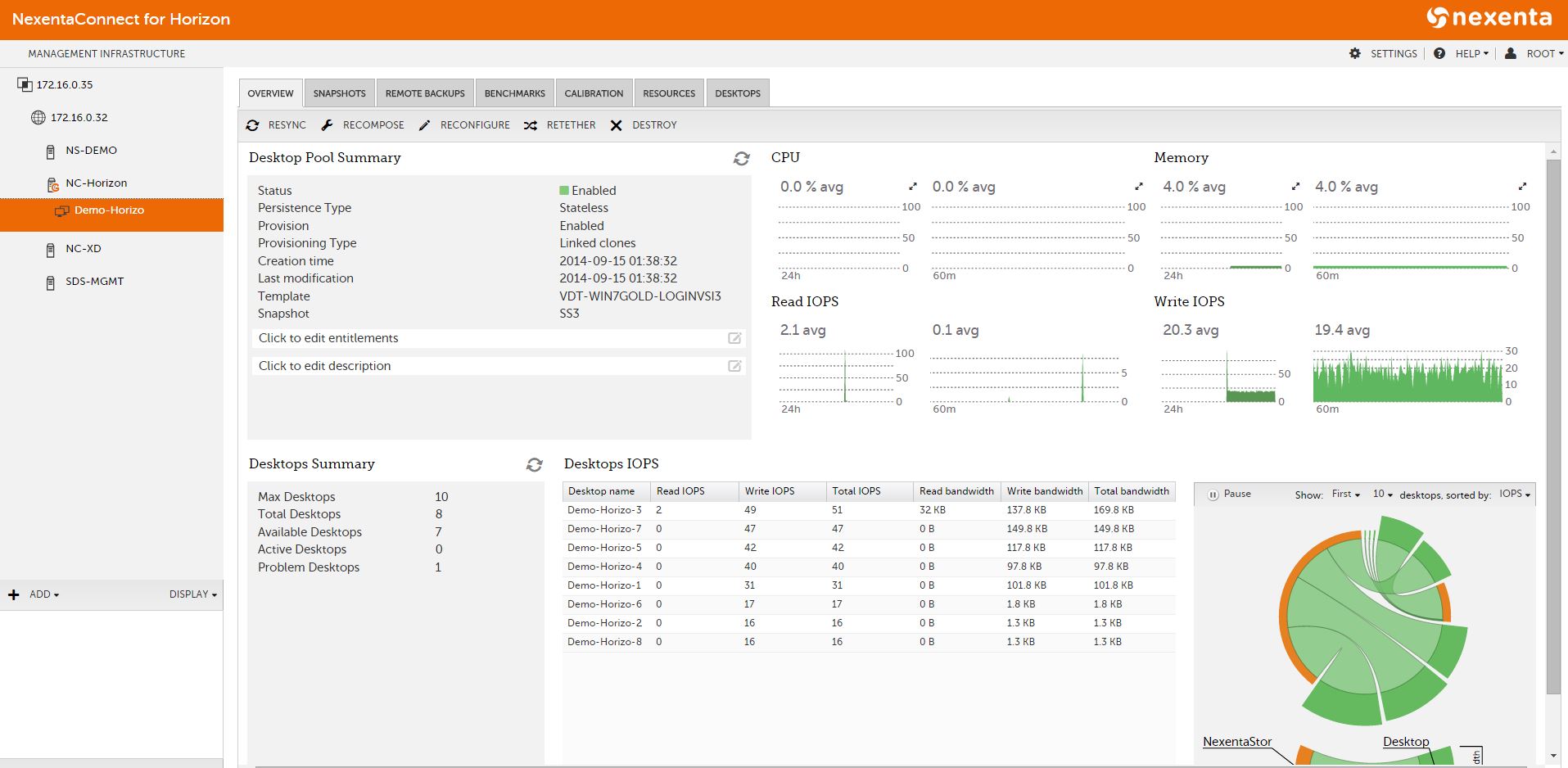Nexenta is proud to announce the general availability of NexentaConnect 3.0 for VMware Horizon (with View). The VDI acceleration and automation tool provides increased desktop density and higher IO performance for existing storage deployments as well as greenfield new VDI solutions. NexentaConnect 3.0 introduces many new features and enhancements for a VDI solution to include
- Full support for VMware Horizon 6

- Pass Through Support for VMware GPU
- Import Horizon View desktop pools
- Fast desktop pool restoration from backup
Combining all these great new features allows you to now accelerate and grow your existing Horizon deployment, which may have been limited by traditional storage solutions.
To learn more about NexentaConnect for VMware Horizon go to http://www.nexenta.com/products/nexentaconnect/nexentaconnect-horizon and download the 45 day free trial.
